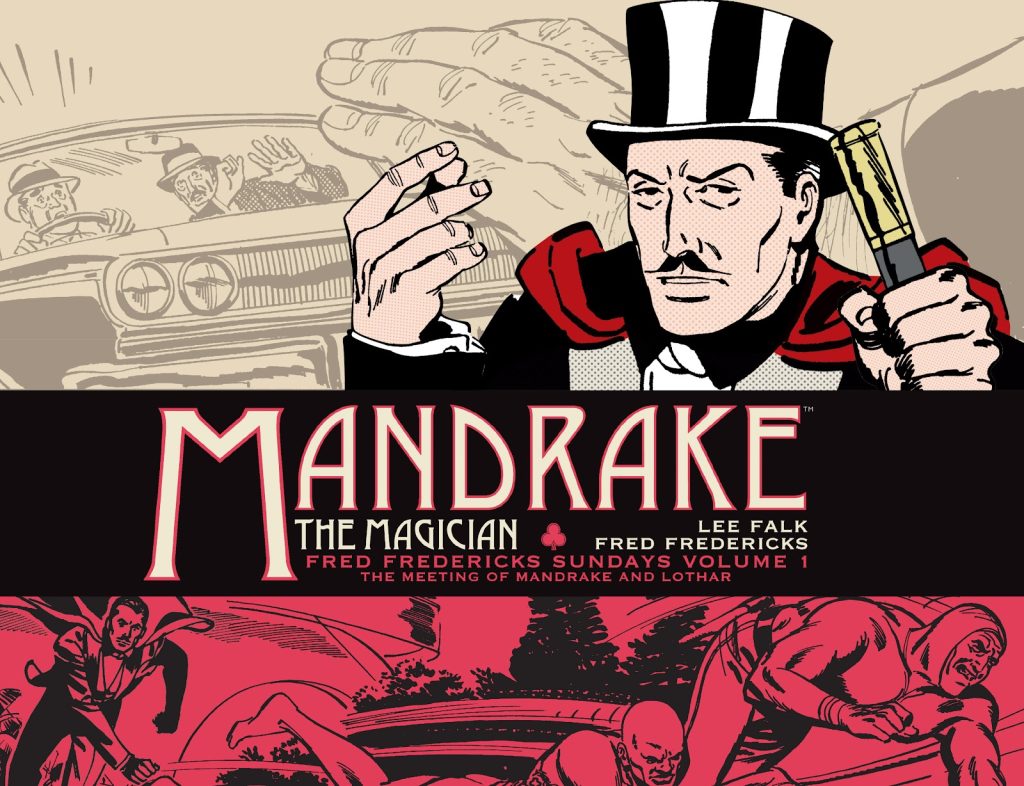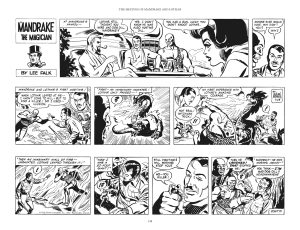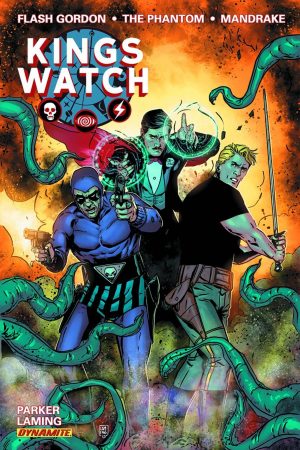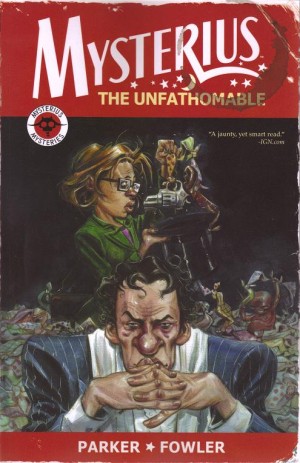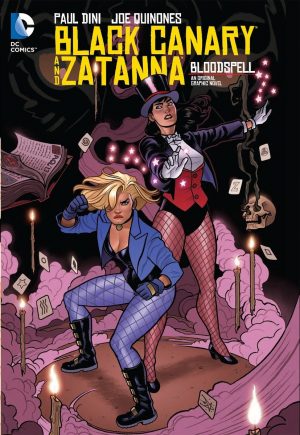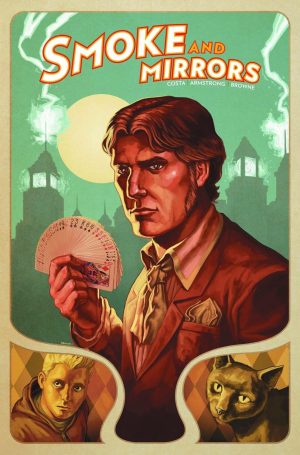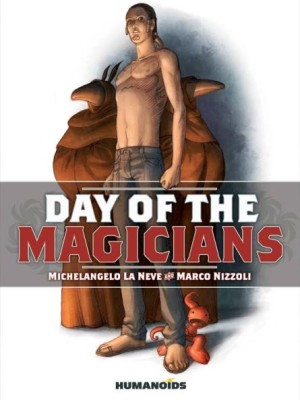Review by Frank Plowright
Despite his billing as a magician, Mandrake is more properly an extremely adept hypnotist, able to make people believe the impossible is taking place at very short notice. However, the extent of his abilities varies from story to story.
The Meeting of Mandrake and Lothar covers the Sunday newspaper strip over eleven adventures between 1965 and 1969. Three black and white tiers per episode presents a different continuity from the daily strip for the larger Sunday newspaper readership. This volume begins with Fred Fredericks taking over the art from Phil Davis, whose name still appears on much of ‘The Time Traveller’.
While crediting Lee Falk’s imagination at the time, Mandrake’s strip is resolutely of its era. Once fantastic ideas like close circuit TV have been usurped by reality, and once mind-expanding plots now seem commonplace in a world of virtual reality, while the strips aren’t strong enough or stylish enough to overcome that as sparkling period dramas. Furthermore, at times Falk doesn’t do himself any favours, such as there being so few occasions when Mandrake isn’t formally dressed, one shown on the sample art where the heat of Africa prompts a safari jacket. His only concession to a cruise on a small yacht is to remove his top hat, he’s seen lounging in a hammock in full dress suit and keeps framed photographs of his enemies on the walls of his hideout. The impression given is Mandrake being beyond eccentric despite his starched manner. You could imagine Jacob Rees-Mogg standing in.
It’s apparent Falk has tried to update Mandrake to the 1960s of James Bond movies and spy series on TV, but even that now transmits as arch and contrived when compared to the sleek Secret Agent Corrigan by Archie Goodwin and Al Williamson operating in similar territory. At his best, here the story of the Astro-Pirates, Falk delivers a well structured mystery incorporating danger and now dated technology that was at the time cutting edge. Troublesome throughout is the role of Lothar, an African king according to the title story, yet he’d rather wear a circus strongman’s outfit to be Mandrake’s servant and sidekick. His explanation of ruling being dull and Mandrake’s life being exciting doesn’t really cut it.
At least under Fredericks Lothar is drawn with the same reality applied to the remainder of the cast, but his art lacks sparkle. He’s better with movement than Davis, but Davis had greater imagination and his layouts caught the eye. Fredricks is solid, not spectacular, and nothing over four years of continuity is a page you’ll want to stop and admire.
While the 1960s spy fad influences the earliest stories and introduces new supporting character Jed, by the late 1960s Mandrake more commonly deals with aliens, ranging from would-be conquerors to galactic gamblers. The most unusual of those has an extremely efficient child princess barely requiring Mandrake’s help.
If you’re as enthusiastic about Fredericks’ work as Andreas Eriksson is in the introduction, then Titan have done him proud with the production of this large format hardcover. The art reproduction is crisp, and the slightly off white paper a nice touch. However, the feeling is this was behind the times even in the 1960s.
